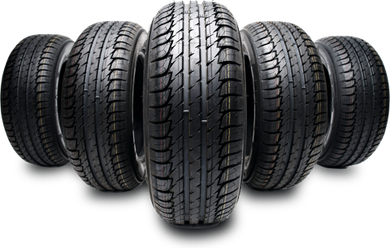Tire Solution: The Impact of Climate Problems
When it comes to making certain ideal performance and safety on the road, understanding the influence of weather conditions on tire solution is important. In this discussion, we will certainly check out the elaborate connection between climate problems and tire service, losing light on the relevance of weather-specific tire upkeep methods and considerations.
Heat and Tire Performance
When subjected to high temperatures, tires experience adjustments in performance that can substantially affect lorry safety and security and handling. The warm created from prolonged driving or heat conditions triggers the tire rubber to soften, resulting in decreased tread life and enhanced wear. As the rubber comes to be softer, the tire's hold when traveling decreases, affecting braking distances and general grip. In extreme instances, too much warmth can also create tire blowouts, posing a serious security danger to the vehicle and its owners.
Moreover, high temperature levels can increase the procedure of tire aging, creating the rubber to deteriorate more rapidly. This can result in splits, protrudes, and various other kinds of damages that jeopardize the architectural stability of the tire. To mitigate the impacts of warm on tire efficiency, drivers need to regularly check their tire pressure, rotate tires to make sure even put on, and check for any signs of damages. Additionally, using tires especially made to stand up to heats can assist preserve ideal performance and safety and security on the roadway.
Cold Climate Impacts
Cold climate conditions can have a considerable influence on tire efficiency and security. As temperature levels drop, tire rubber can set, leading to decreased grip on icy or snow-covered roadways. In winter, tires might likewise lose air pressure a lot more quickly, which can affect managing and gas effectiveness. Furthermore, chilly temperatures can create tire sidewalls to stiffen, increasing the risk of damage from holes or other roadway dangers.
To alleviate the impacts of chilly weather on tires, it is critical to consistently examine tire stress and inflate them to the producer's recommended degrees. Using winter months or all-season tires designed for winter problems can also enhance traction and hold on icy or snowy roads - morris tire and alignment. Proper tire upkeep, consisting of regular assessments for wear and damage, ends up being much more essential during cooler months to guarantee optimum efficiency and security
Rainy Issues Impact
Throughout wet problems, tire performance and security can be considerably influenced by the wet roadway surface areas and minimized exposure. The tread pattern of tires plays a critical duty in keeping traction on wet roadways. Tires with worn-out treads are more susceptible to hydroplaning, where a layer of water builds up between the road and the tire surface area, bring about loss of grip. To fight this, drivers ought to frequently examine their tires for adequate step depth and consider investing in tires especially created for wet conditions.

Snow and Tire Safety
When driving in snowy problems, having the ideal tires can make a considerable difference in security and performance. Winter months tires are made with unique rubber substances and step patterns to supply far better grip on snow and ice contrasted to all-season tires.
In addition to using winter months tires, it is important to guarantee they are effectively blown up. Cold climate can create tire pressure to drop, impacting traction and handling (discount tires morris il). Regularly checking and preserving the appropriate tire stress is essential for optimum performance in snowy problems

Weather-Related Tire Maintenance
When encountered with numerous weather, proper tire upkeep becomes a vital aspect of automobile safety and efficiency. Weather-related tire maintenance includes a variety of techniques targeted at making certain ideal tire feature and longevity in different climate scenarios. One crucial aspect of weather-related tire more maintenance is tire pressure guideline. Fluctuating temperatures can trigger tire stress to vary, impacting traction and gas performance. Routinely examining and readjusting tire pressure according to producer suggestions is important for risk-free driving in altering weather. In addition, tire walk depth plays a considerable role in managing various climate elements. Tires with adequate tread depth offer much better grasp on damp or icy roadways, lowering the threat of hydroplaning or skidding. Evaluating tire walk consistently and changing tires when step wear gets to a particular deepness is essential for keeping traction and stability in damaging weather. By prioritizing weather-related tire upkeep, motorists can boost safety, boost vehicle performance, and prolong the lifespan of their tires.
Verdict
In conclusion, weather conditions have a significant effect on tire efficiency and security. From warmth impacting tire stress and use to winter lowering traction, it is vital to take try these out into consideration the weather when maintaining and making use of tires. Stormy conditions can decrease hold and lead to hydroplaning, while snow can increase the danger of mishaps if tires are not correctly equipped. Weather-related tire maintenance is essential in making sure optimum performance and safety when traveling.
In this conversation, we will certainly check out the intricate relationship in between weather condition problems and tire solution, losing light on the value of weather-specific tire upkeep methods and considerations.
